Check out our shop where you can purchase tours! Learn More
What is the Western Wall?
If you were to ask an Israeli what the Western Wall is, he or she would probably tell you that it is the most sacred place in the world for Jews and that it was part of the Second Temple.
Both of these beliefs are incorrect.
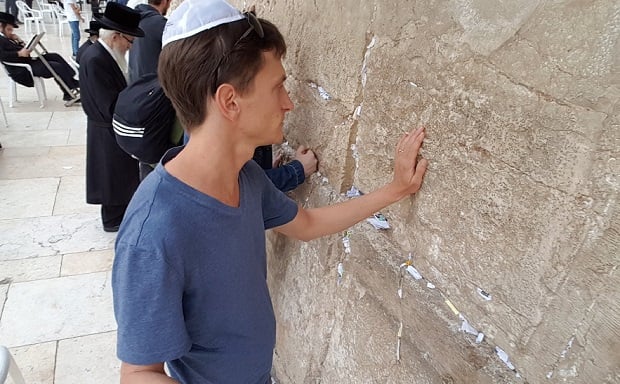
Two thousand years ago, when the Temple was still standing, the Western Wall had no meaning whatsoever.
In order to understand what the Western Wall is, you have to go back three thousand years.
King Solomon built the First Temple. It stood at the top of Mount Moriah. This is also the place where, according to the Bible, Abraham almost sacrificed his son Isaac.The Temple stood for four hundred years, until the Babylonians conquered Jerusalem and destroyed it in 586 BCE.
The Holy Ark and the Ten Commandments, which were inside the Temple, were destroyed along with the building, and the Jews were expelled from the Land of Israel.
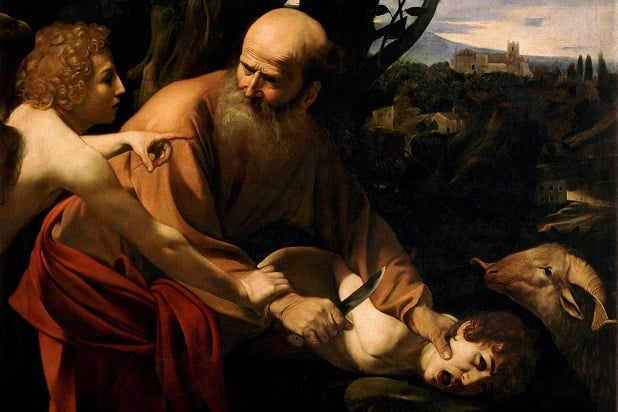
Seventy years later, the Jews were permitted to return and it was then that they built the Second Temple.
The Temple was renovated a number of times until King Herod (who ruled between the years 37 BCE and 4 BCE) decided to rebuild it. He had a problem though: the Temple stood on the peak of a mountain where there was only limited space.
King Herod, who was known for his massive building projects, decided that he would build four huge supporting walls around the mountain peak and thus transform it into a great level platform.
On this man-made platform he rebuilt the Temple. The Western Wall is actually a small part (about one-seventh) of one of the large supporting walls.
In the year 70 CE, during the Jewish rebellion against the Romans, Jerusalem was conquered and the Temple was destroyed.
After the rebellion Jews were not permitted to go up to the area of the Temple Mount, where the temple had stood, and started praying next to different parts of the retaining wall that had supported it.
This is the most important thing to understand about the Western Wall: the holiest place for Jews is the Temple Mount, for this is where the Temple stood.
Since Jews were not allowed to go up there, first because of the Romans and then because the Muslims built the Dome of the Rock up there, then the walls around it assumed religious importance.
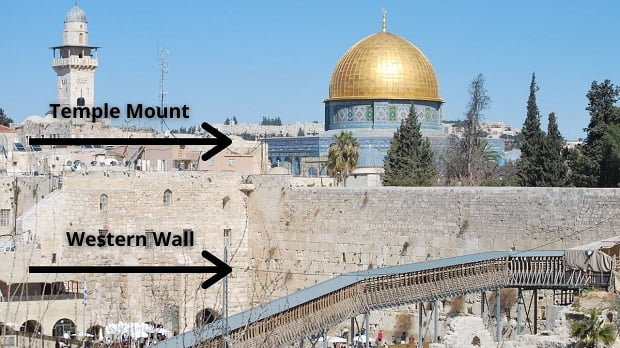
Over the last 2000 years, Jews have prayed next to different sections of the retaining walls.
First they prayed next to the southern walls, where the original entrance to the Temple Mount itself had been.
Then they prayed next to the Golden Gate (or Mercy Gate) in the eastern walls, and it is only in the last 500 years that the small part of the huge retaining wall that we call the Western Wall has become so important to Jews, as a religious site where they can remember the Temple.
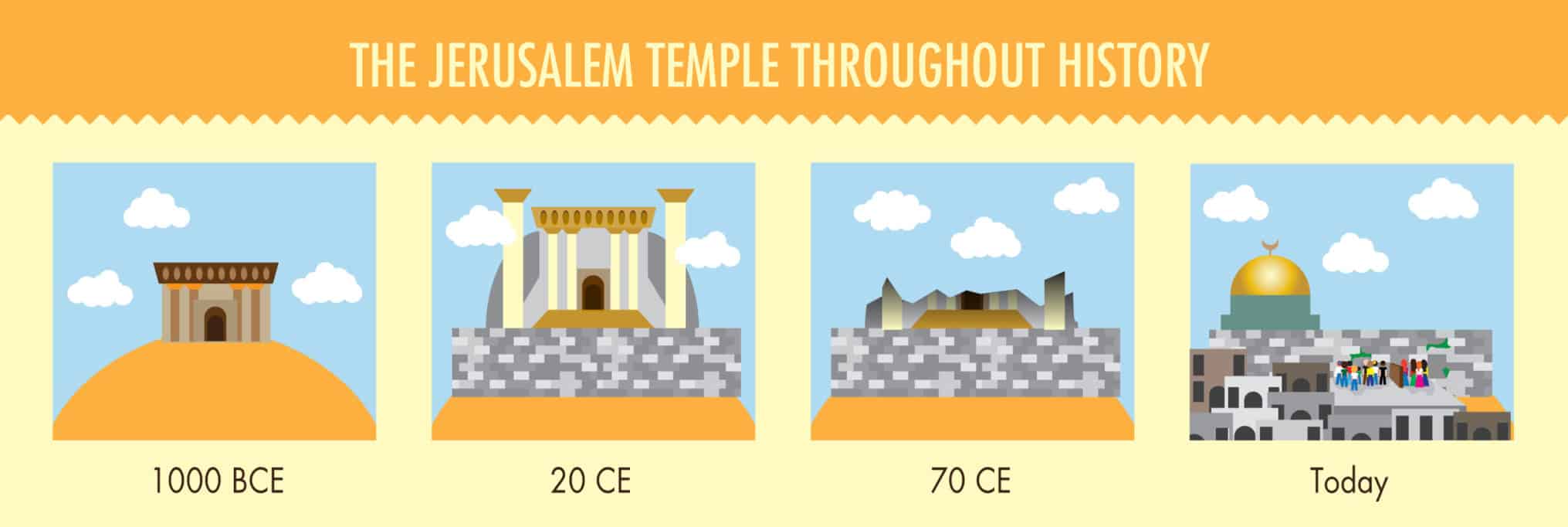
A quick summary:
1000 BCE – The First Temple stands at the top of Mount Moriah.
20 CE – King Herod wants to build a huge temple, so to create the platform he builds massive retaining walls around Mount Moriah.
70 CE – The Romans destroy the temple but the retaining walls remain. In the 7th century, Muslims built the Dome of the Rock on the site where the temple had stood. Jews were prohibited from praying at the top of the Temple Mount and started praying around the retaining walls.
Today – Today – for the last number of centuries, a small section of the western wall of the retaining wall has become the most important place for Jews to come and pray and remember the Temple.
The Western Wall has a couple of names.
The best-known of these is the Western Wall, as it is the western wall of the retaining walls that support the Temple Mount. In Hebrew we say HaKotel, which means ‘The Wall’.
Another name is the Wailing Wall, which was first used by the Muslims, as they saw the Jews mourning the destroyed temple there. This name was then translated to some European languages.
The Wailing Wall is open 24 hours a day, seven days a week for everybody.
The Wailing Wall is basically an open-air synagogue, so there is a separation between men and women.
Anyone can walk to the wall, pray there or just have a look, but do be respectful of others (a rule that is good to employ generally :))
From Friday evening to Saturday evening you are not allowed to take photos or smoke within the perimeter.
Knees and shoulders must be covered.
For information about tours through the Wailing Wall Tunnels, click here.
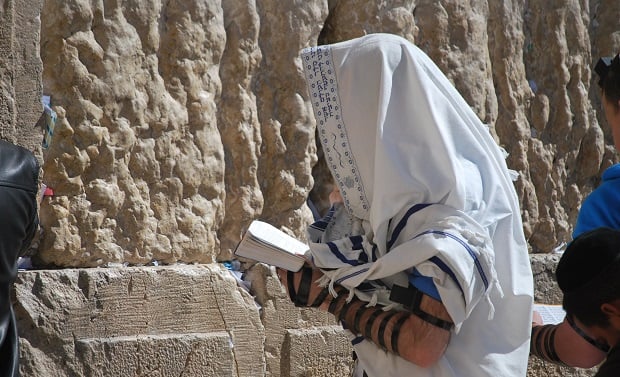
If you’d like more information about personalized, all-inclusive, tailor-made luxury experiences, then email my partner Asaf and let us take your Israel trip to the next level. Make memories, create ties and build cherished family moments. Let’s get your trip of a lifetime in motion.
If you’re traveling on a modest budget, you can also purchase my Booklets, in which I basically wrote down everything that I say on my 3 most popular tours: Jerusalem, Tel Aviv, and the Judaean Desert. I also added maps, pictures and graphics which will enable you to be your own guide. The booklets are only sold outside Israel, so order now and come prepared! Or download as a PDF or EPUB (e-book).
+ Discount Codes
…or as a PDF
©2024 Traveling Israel. All rights reserved. | SITEMAP | TERMS & CONDITIONS